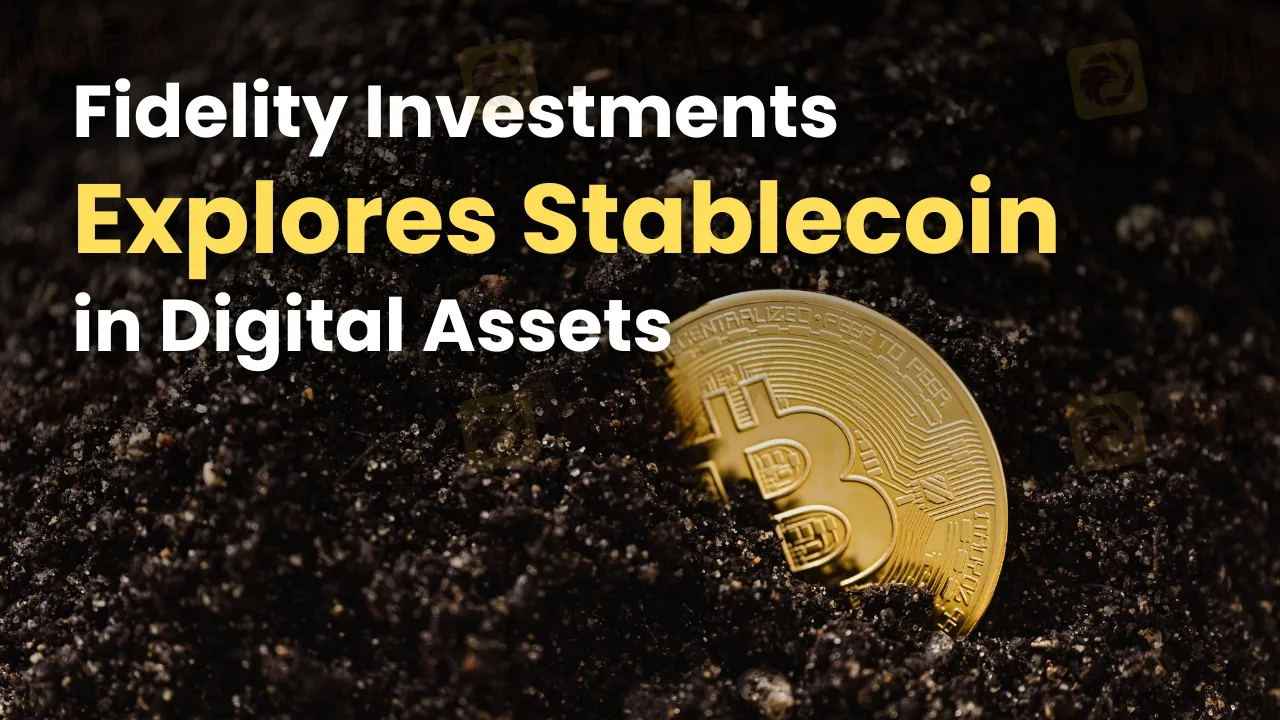Fidelity Investments Explores Stablecoin Innovation in Digital Assets Sector
Abstract:Fidelity Investments tests a stablecoin, joining major financial firms in the booming crypto sector. Discover how this impacts digital payments and blockchain adoption.

Fidelity Investments, a leading in the finance industry, is venturing further into cryptocurrency by experimenting with its own stablecoin. This step, driven by its digital assets team, highlights a rising pattern among leading financial players adopting one of cryptos most popular areas. The team already offers institutional clients trading and storage options for Bitcoin, Ether, and Litecoin, so launching a stablecoin feels like a logical next move.
A Fidelity representative stated, “We‘re always exploring and testing fresh possibilities to address our clients’ changing demands,” showing the companys forward-thinking approach to the evolving financial world. Stablecoins differ from their wilder crypto cousins by staying steady, usually tied directly to the US dollar. Traders love them for fast position switches, but their uses are growing—think international cash transfers, quicker online payments, and even finalizing trades for things like bonds using blockchain systems.

The Financial Times first reported Fidelity‘s stablecoin plans, noting how this test fits into a larger trend of exploration. Big names like PayPal, which debuted its stablecoin in 2023, and others like Robinhood Markets and Revolut, said to be considering their own, are jumping in too. In Europe, Societe Generale has launched a euro-tied stablecoin, while Tether’s USDT dominates with a massive $144 billion market value.
This boom in digital assets isn‘t isolated. New rules in Europe and a crypto-friendly stance from US President Donald Trump’s government are smoothing the path. In the US, two bills moving through Congress seek to establish stablecoins as a key part of worldwide payments, with Trump cheering them on. His own crypto project, World Liberty Financial, just revealed plans for a dollar-linked stablecoin on March 25, 2025.
Fidelity‘s crypto story began in 2014, with its digital assets unit starting in 2018. The Boston firm has since introduced crypto exchange-traded products, like Bitcoin and Ether funds, solidifying its role as a Wall Street trailblazer. Beyond stablecoins, Fidelity is also looking at tokenized funds—a recent filing suggests a tokenized money-market fund might be next. This mirrors BlackRock’s example, whose BUIDL fund, tied to US Treasuries, has grown to nearly $2 billion since its debut last March, according to RWA.xyz data.
As the crypto space gains steam, Fidelity‘s stablecoin trial marks a key turning point. With old-school finance and blockchain growing closer, the firm’s actions could transform how we trade, pay, and invest in a world leaning hard into digital solutions.

Read more

Using Any of These Illegal Forex Trading Apps? Stop Before It Turns into a Crisis
The Reserve Bank of India (RBI) has listed out some illegal forex apps India. Read this article to know some of those apps.

IC Markets Sponsors AEL Limassol, Football Club Until 2027
AEL Limassol has renewed its deal with IC Markets (EU) Ltd, who will stay as the team’s Gold Sponsor until 2027. The sponsorship deal was first announced for the 2025–2026 season, but it has now been officially extended until 2027.

5 Reasons to Stay Away from Core Prime Markets
The Forex market is a very unpredictable, complex, and risky place. There are many brokers that appear genuine but can steal your hard-earned money. So, staying alert is the only way to survive in this dynamic environment. Therefore, in this article, we are sharing 5 warning signs about Core Prime Markets.

Think Before You Trade! Unlicensed Brokers List Inside
The French regulator AMF has issued a warning against five unlicensed brokers. Investors are encouraged to verify the list to protect themselves from fraud.
WikiFX Broker
Latest News
Core inflation rate rose to 2.7% in May, more than expected, Feds preferred gauge shows
Core inflation rate rose to 2.7% in May, more than expected, Fed's preferred gauge shows
Stablecoins go mainstream: Why banks and credit card firms are issuing their own crypto tokens
The Shame of Being Scammed: Don't Ever Stay Silent
Capital.com Launches $1 Million EU Client Insurance to Enhance Investor Safety
The five most investment-risky brokers in Malaysia
Citibank Sued in $20M Romance Scam Tied to Fraudulent Transfers
Treasury yields inch higher as investors await the Fed's preferred inflation print
Think Before You Trade! Unlicensed Brokers List Inside
5 Reasons to Stay Away from Core Prime Markets
Rate Calc

